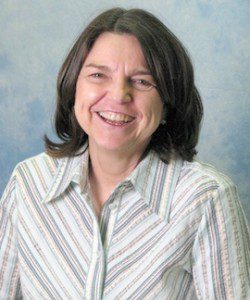 I’ve dedicated many Mindful Monday posts to the topic of stillness … like how to do it. I’m still really confused, to be perfectly honest, HOWEVER, I have met several soul sisters along the way that are pursuing the same kind of spiritual peace. One of my stillness buddies is Anne Simpkinson, the online managing editor for Guideposts.org. Anne has co-edited two anthologies: “Sacred Stories” and “Nourishing the Soul,” and co-wrote “Soul Work: A Field Guide for Spiritual Seekers.” You can read her wonderful blog posts at “Thrive” on Guideposts.org.
I’ve dedicated many Mindful Monday posts to the topic of stillness … like how to do it. I’m still really confused, to be perfectly honest, HOWEVER, I have met several soul sisters along the way that are pursuing the same kind of spiritual peace. One of my stillness buddies is Anne Simpkinson, the online managing editor for Guideposts.org. Anne has co-edited two anthologies: “Sacred Stories” and “Nourishing the Soul,” and co-wrote “Soul Work: A Field Guide for Spiritual Seekers.” You can read her wonderful blog posts at “Thrive” on Guideposts.org.
1. I just wrote a piece on vacations and came across some literature that said, as much as we talk about wanting to change our environments and chill out for a week or two, most of us are incapable of doing just that, and scared to, actually, because it creates a kind of uncomfortableness of sitting with silence and tapping the desires of our heart. Can you speak to that?
Anne: We are bombarded daily with noise, information and activity. So yes, in that environment, it’s difficult to listen deeply to our innermost selves. Quiet, contemplation and silence can make people uncomfortable because they are not used to it. And yet, silence is like a deep, refreshing well that can buoy you in difficult times, ignite your creativity, deepen your faith, give more meaning to your life.
Many people turn the TV on first thing when they wake up in the morning! I can’t start my day with the energy of loud commercials and breaking news. It’s too jarring. That said, I live in New York City and love the energy, the sheer numbers and diversity of people from all walks of life and all corners of the world—the general chaos of a large, international city. So when I go on a silent retreat, it takes me several days to slow down, quiet my mind and turn inward.
When I was younger—I was a child of the 60s and 70s—I thought that Nirvana could become an everyday state of mind. I realize now that we live life as best we can “in the marketplace” but also need to create places and spaces where we can slow down, breathe, contemplate, immerse ourselves in silence.
2. What techniques have you used to slow down and try to be still?
Anne: There are little tricks I play on myself. Like I said, I don’t turn on the radio (except to wake me up in the a.m.) or TV in the morning. Many times when I’m driving I’ll turn off the radio. I don’t bring an ipod or radio with me when I’m out walking in the morning. When I’m writing, I’ll occasionally have music in the background, but more times than not, I won’t. The quiet helps me better concentrate and focus.
I have a surefire way of slowing down: living with a cat or two. My seven-and-a-half-year-old tuxedo cat, Mimi, joins me when I do my centering prayer in the morning. Once she settles down, she surrenders to sleep, “cat naps,” and her stillness is contagious. After 20 minutes, my regular period of prayer, I add time for intercessory prayers just to stay a little longer in that peaceful state with her.
3. Do you have any daily meditative practices that help you begin your day with (relative) peace of mind?
Anne: In the mid-90s, I found a practice called Centering Prayer, which was developed by three Trappist monks—Father Thomas Keating, Father M. Basil Pennington and Father William Menninger. The practice is based on a method described in the 14th-century text, The Cloud of Unknowing, and which has been refined over the years. Instead of focusing on one’s breath or repeating a mantra, one uses a sacred word to renew one’s intention to be with God, to be with God as God is. This of course requires us to disengage from our thoughts. Thoughts never really go away but they do move from their usual noisy place in the foreground of consciousness to the background; the experience is of simply sitting in Stillness and Silence. Or using St. Gregory’s words, one “rests in God.” That’s a lovely image, isn’t it? Just like Mimi surrendering to sleep in my arms, I too can surrender to God’s loving presence and embrace through centering prayer, through Silence.
So that’s my daily practice plus I participate in a weekly group, which is a really important element of the practice. I think that praying with others intensifies the experience and re-charges one’s commitment.
Occasionally, I will either lead one-day Centering Prayer workshops, like an Advent or Lenten Quiet Day, or participate in a silent retreat weekend. I’ve also done a couple ten-day retreats. If you have the time and resources to do so, I highly recommend extended retreats. They turbo-charge your practice and help you realize the riches that dipping into one’s center can yield.
* Click here to subscribe to Beyond Blue and click here to follow Therese on Twitter and click here to join Group Beyond Blue, a depression support group. Now stop clicking.

